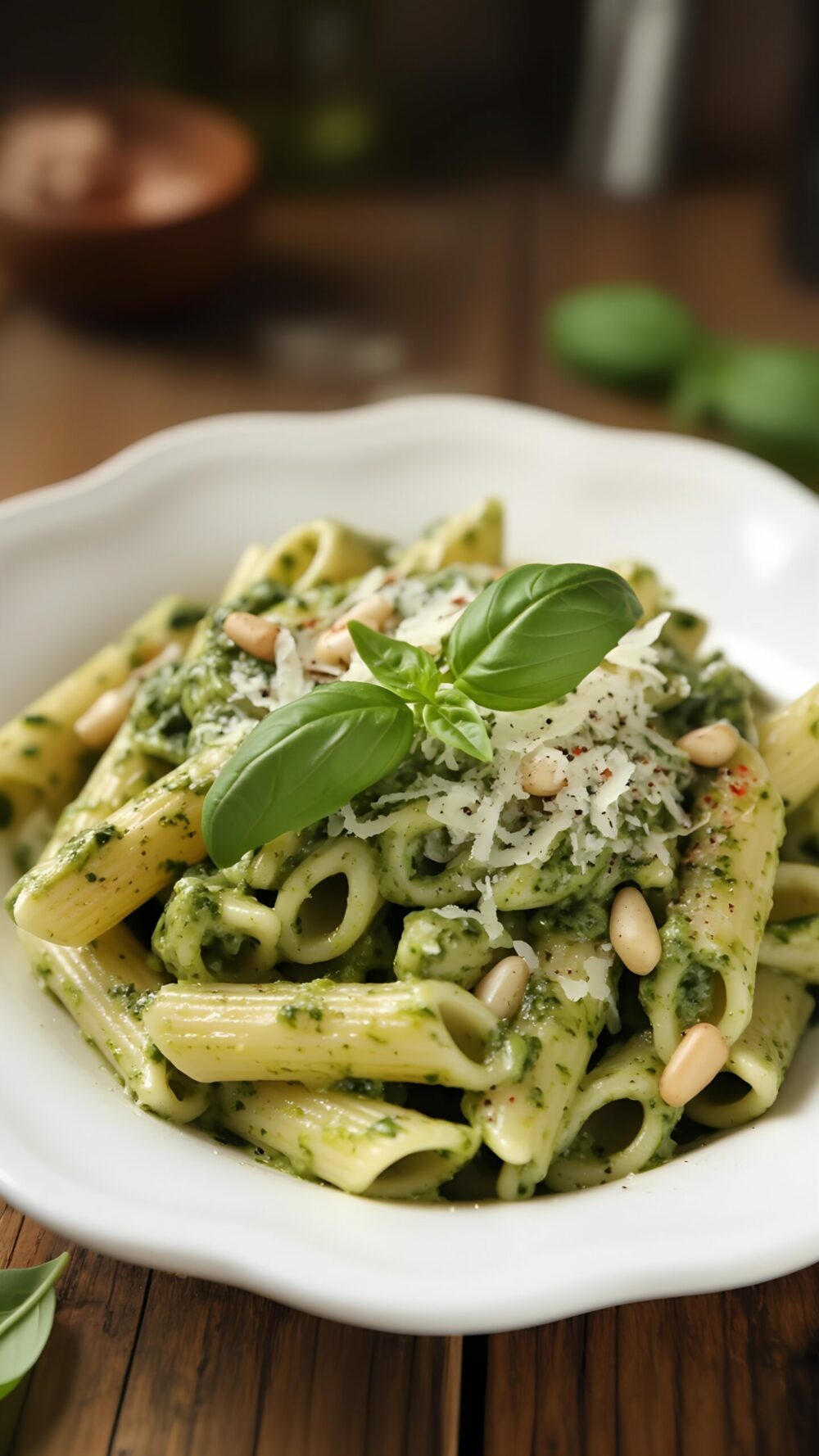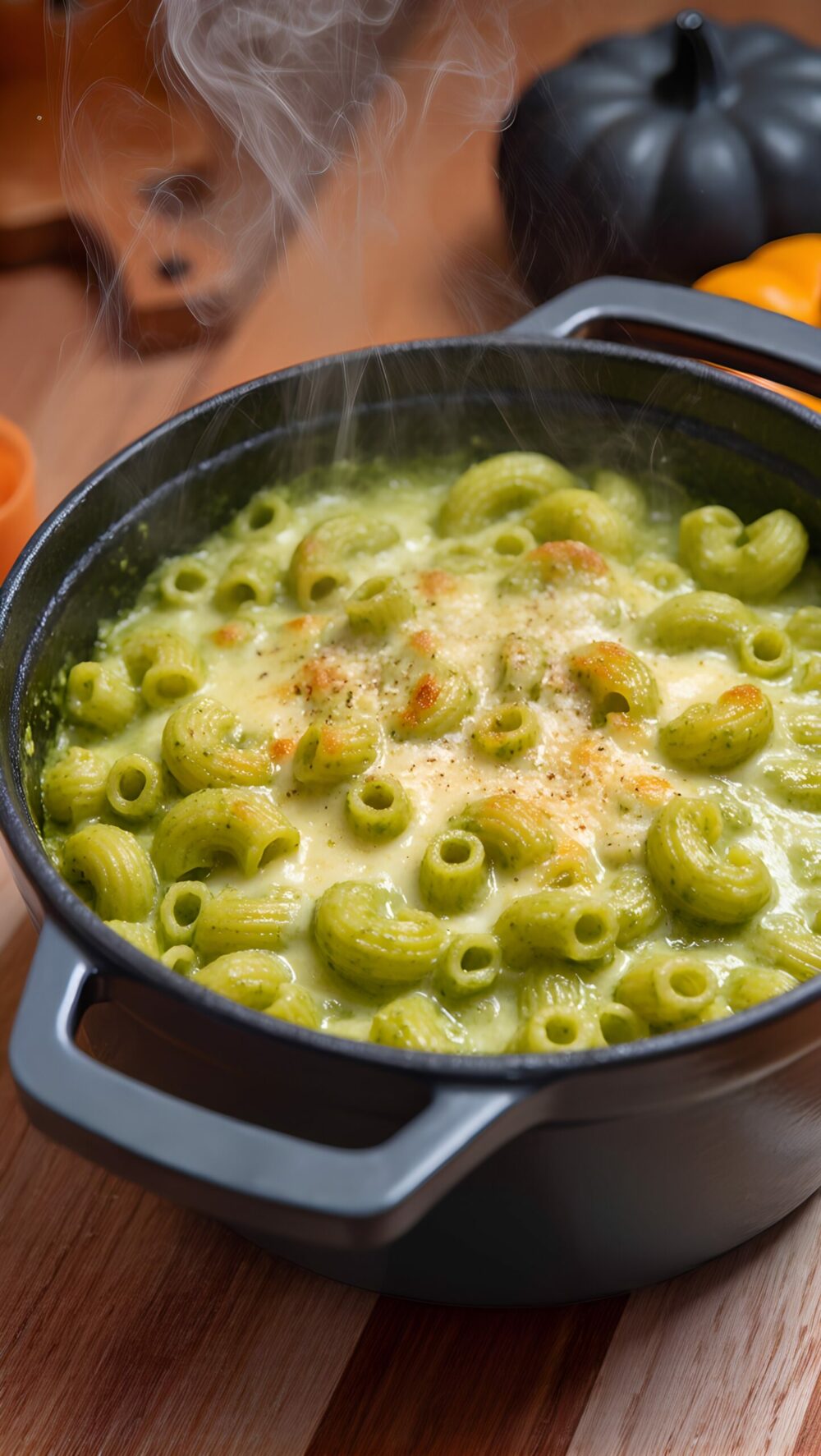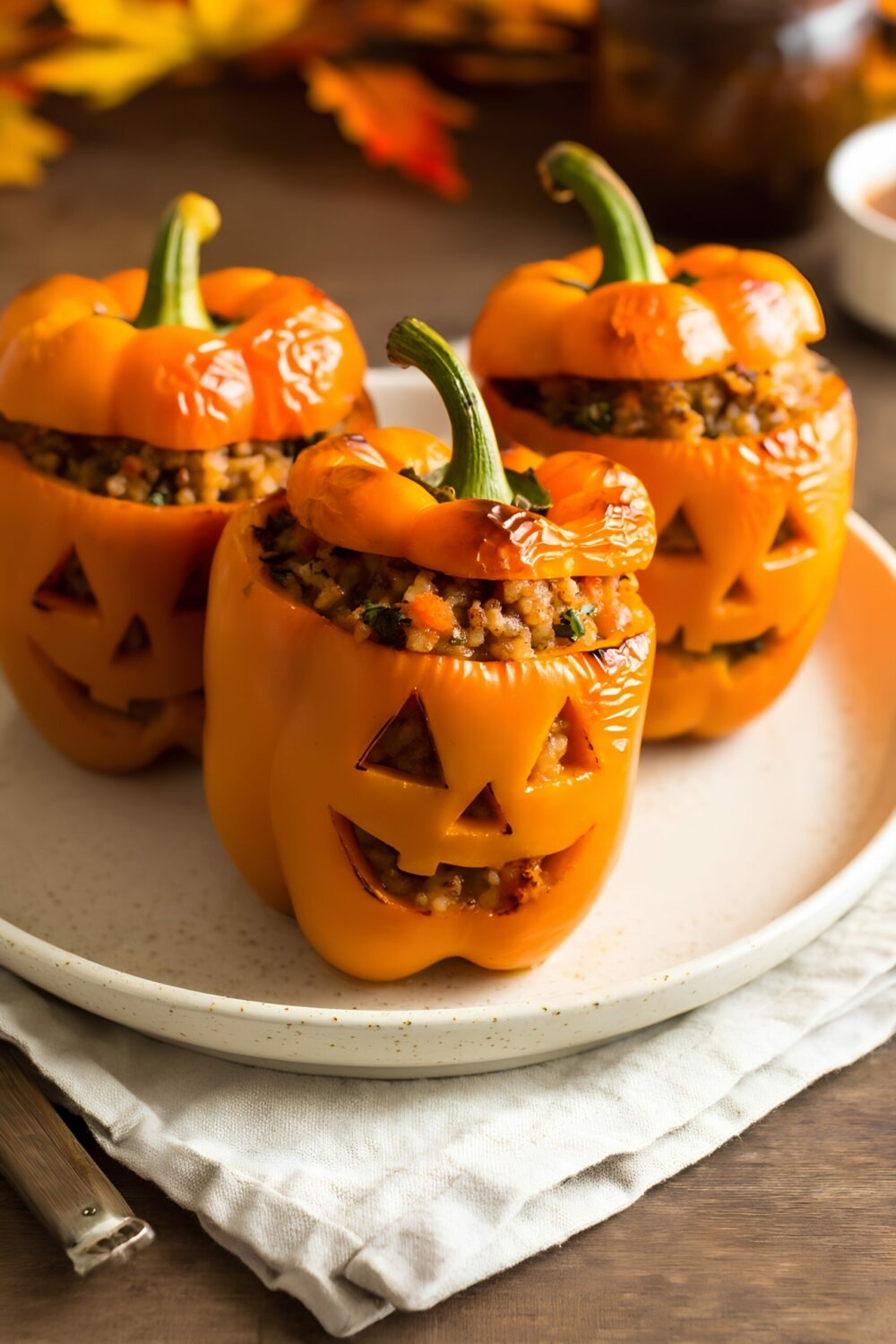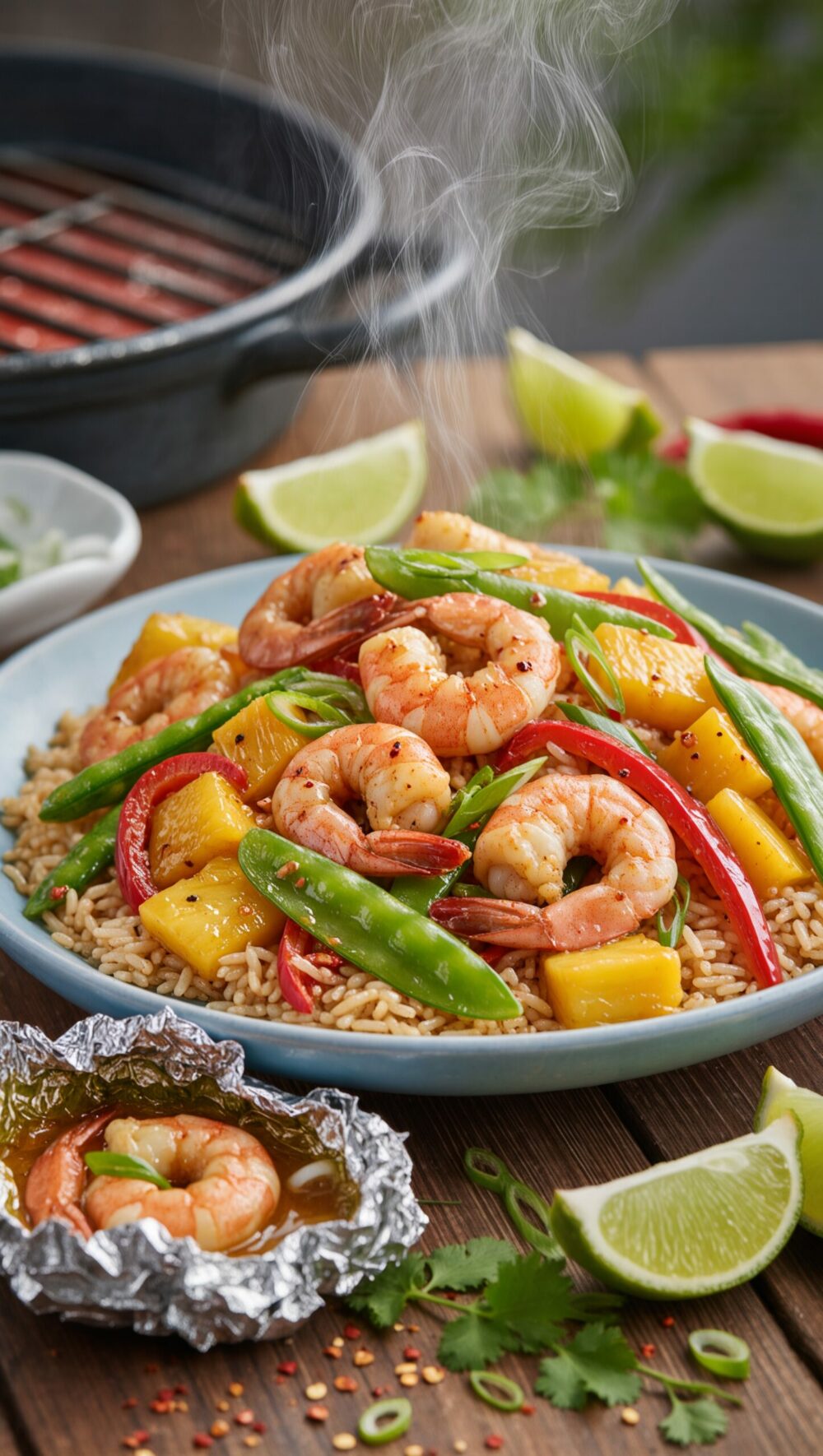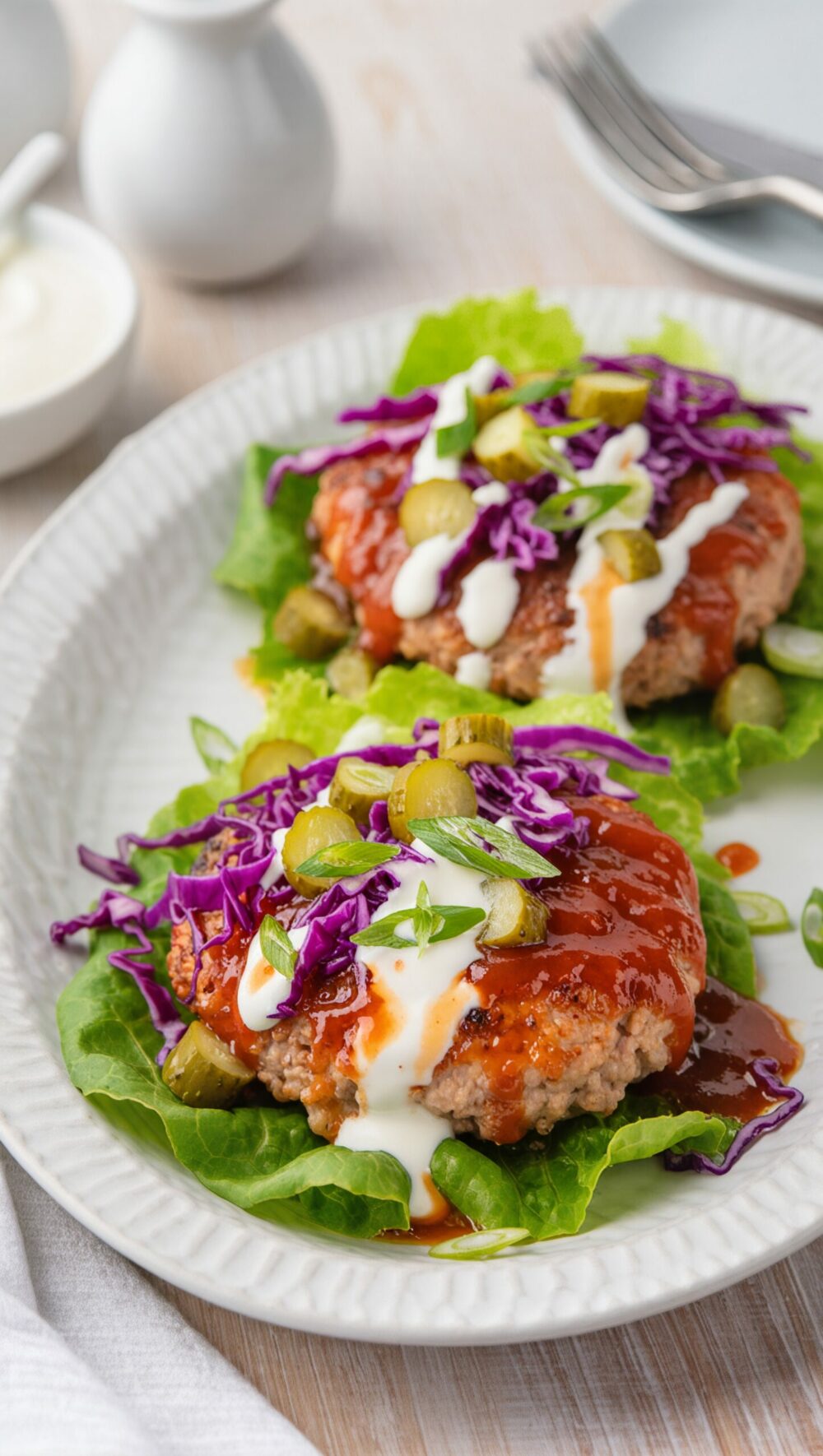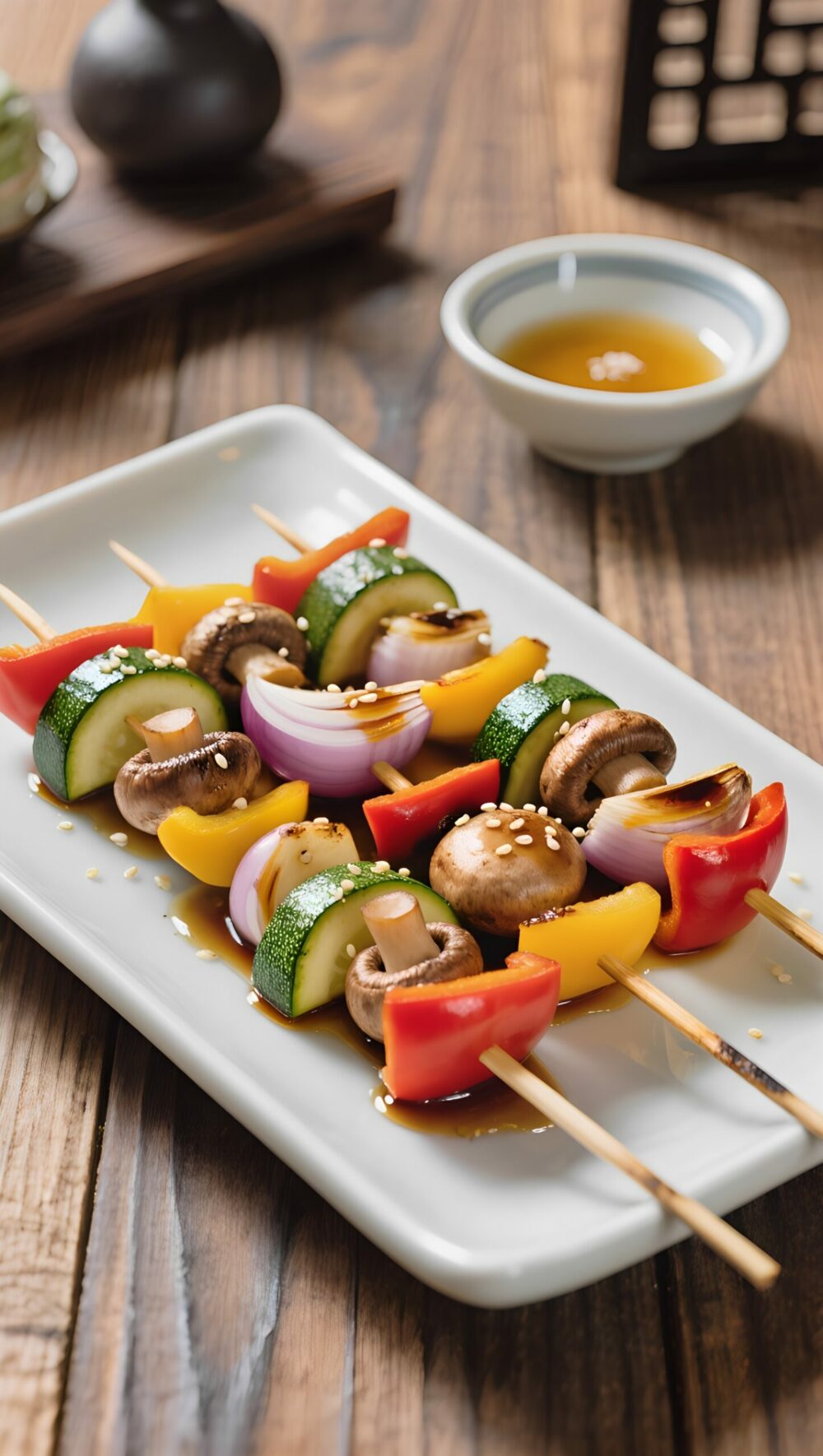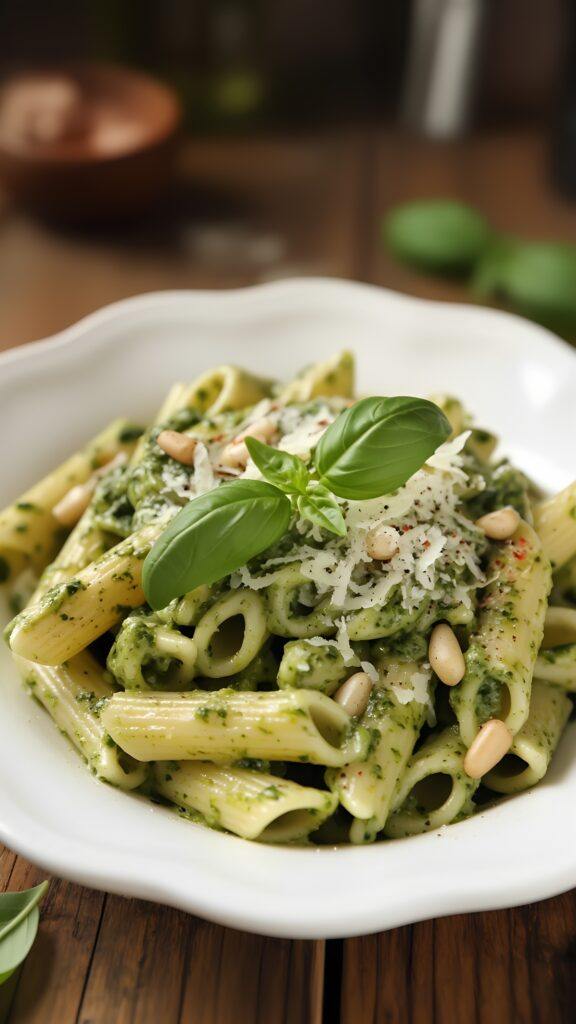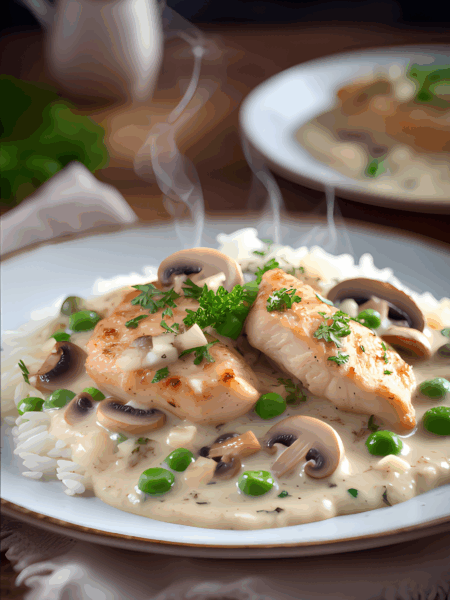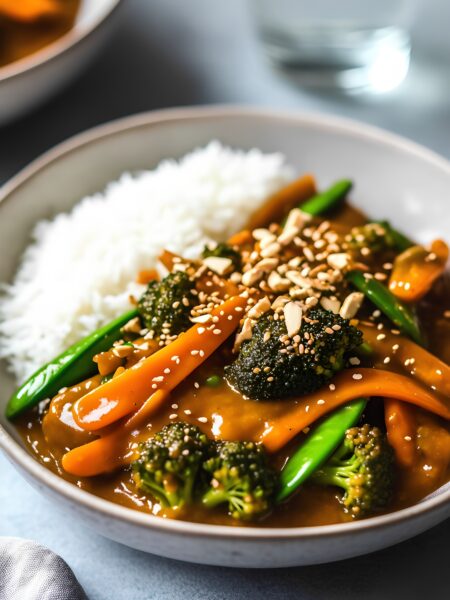No-Fuss Pesto Pasta, a culinary gem for those who appreciate simplicity without compromising on flavor. This dish is a testament to how a handful of fresh ingredients can create a symphony of tastes that dances on your palate. It’s the kind of recipe that transforms a mundane weeknight dinner into an extraordinary meal with minimal effort.
Origin and Inspiration
Pesto, originating from the sun-drenched regions of Liguria in Italy, has a rich history rooted in tradition and simplicity. The name “pesto” derives from the Italian word “pestare,” meaning to pound or crush, referencing the original method of preparing pesto with a mortar and pestle. This sauce, vibrant green and aromatic, is synonymous with Italian culinary heritage and has been lovingly passed down through generations. The beauty of pesto lies in its adaptability and the way it embraces ingredients like basil, garlic, pine nuts, Parmesan, and olive oil, each contributing to a harmonious blend of flavors.
Ingredients and Flavor Profile
At the heart of this No-Fuss Pesto Pasta recipe is the classic combination of fresh basil leaves, fragrant garlic, nutty pine nuts, and a generous grating of aged Parmesan cheese. These ingredients meld together to create a sauce that is both rich and refreshing. The silky olive oil binds everything into a luscious paste that clings perfectly to each strand of pasta. The vibrant green hue and the heady aroma of basil transport you straight to the Mediterranean, evoking memories of warm summer days and garden-fresh meals. This dish is a testament to the power of simplicity, where quality ingredients shine and each bite is a celebration of flavor.
Cooking Techniques and Tips
The secret to mastering No-Fuss Pesto Pasta lies in a few simple techniques that elevate the dish from good to extraordinary. Toasting the pine nuts is an essential step that unlocks their full potential, adding a layer of depth and nuttiness to the sauce. Blanching the basil leaves before blending helps preserve their vibrant color, ensuring your pesto remains a brilliant, appetizing green. As for the pasta, cooking it to a perfect al dente is crucial; it should have a slight bite that contrasts beautifully with the creamy pesto. Remember, a splash of the pasta cooking water can help emulsify the sauce, resulting in a glossy finish that clings to the pasta like a culinary hug.
No-Fuss Pesto Pasta
Description
A quick and easy pasta dish featuring vibrant pesto sauce, perfect for a simple and flavorful meal. Ideal for a weeknight dinner or a casual gathering.
Ingredients
Pasta Ingredients
Pesto Sauce Ingredients
Instructions
Preparing the Ingredients
-
Gather Your Ingredients
Start by gathering all your ingredients. You'll need fresh basil leaves, garlic cloves, pine nuts, parmesan cheese, olive oil, salt, and your favorite pasta.Having everything ready before you start cooking makes the process smooth and enjoyable.
Making the Pesto
-
Toast the Pine Nuts
In a small skillet over medium heat, toast the pine nuts until they are golden brown and fragrant. This should take about 3-4 minutes. Stir frequently to prevent burning.Toasting the nuts adds a wonderful depth of flavor to your pesto. -
Blend the Ingredients
In a food processor, combine the basil leaves, toasted pine nuts, peeled garlic cloves, and grated parmesan. Pulse a few times to roughly chop the ingredients.Pulsing instead of continuous blending helps maintain a nice texture in the pesto. -
Add Olive Oil
With the processor running, slowly drizzle in the olive oil until the mixture is smooth and well combined. Season with salt to taste.Adding the oil slowly helps emulsify the pesto, giving it a creamy consistency.
Cooking the Pasta
-
Boil the Pasta
Bring a large pot of salted water to a boil. Cook the pasta according to the package instructions until al dente.Don't overcook the pasta; it should have a slight bite to it! -
Reserve Pasta Water
Before draining the pasta, reserve about a cup of the cooking water. This can be used to adjust the consistency of the pesto sauce.Pasta water is starchy and helps the pesto adhere to the pasta.
Combining the Dish
-
Mix Pasta and Pesto
In a large bowl, combine the hot pasta and pesto. Toss to coat the pasta evenly. If the pesto seems too thick, add some of the reserved pasta water a little at a time until you reach the desired consistency.Tossing the pasta while it's hot helps the pesto to cling better.
Finishing Touches
-
Serve and Enjoy
Transfer the pasta to serving plates and garnish with extra parmesan cheese and a few basil leaves. Serve immediately.For an extra touch, drizzle a bit more olive oil over the top before serving.
Note
For a deeper flavor, toast the pine nuts lightly before blending. If pine nuts are unavailable, walnuts or almonds provide a delightful alternative. When selecting basil, look for vibrant, aromatic leaves; they are key to a fresh-tasting pesto. If the basil flavor is too intense, balance it with a handful of parsley. Use extra-virgin olive oil for its superior taste, and add it gradually while blending for a smoother texture. For a creamier pesto, incorporate a tablespoon of softened cream cheese or Greek yogurt. If you prefer a vegan version, nutritional yeast is an excellent substitute for parmesan cheese—use about 3 tablespoons to mimic the cheesy flavor. To prevent the pesto from turning brown, press a piece of plastic wrap directly on its surface when storing. Cook pasta until just al dente—this ensures it will soak up the pesto's flavors perfectly. Reserve a cup of pasta water; its starchiness helps emulsify the pesto and pasta into a silken sauce. Mix the pesto with pasta off the heat to maintain the fresh, vibrant color and taste of the sauce.

